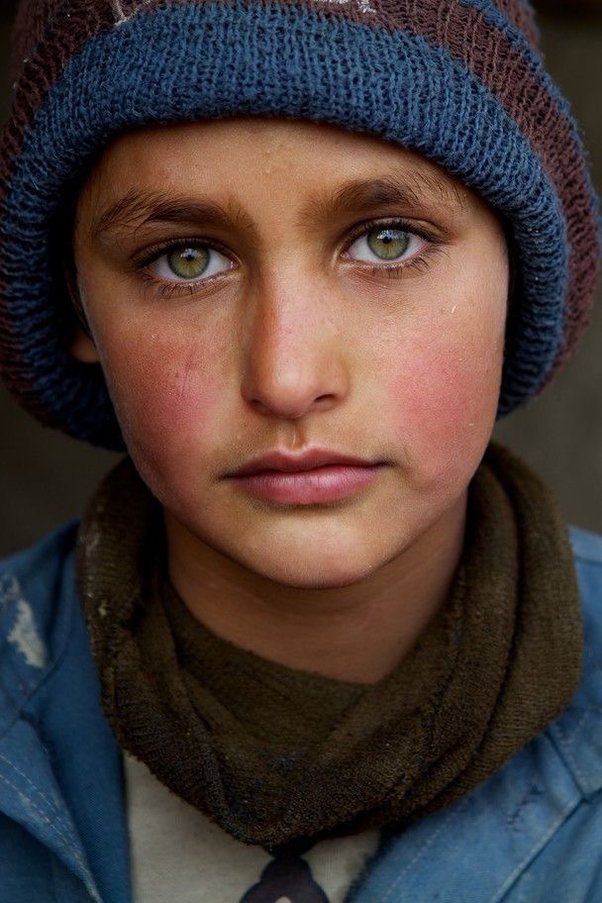2/26/05
Afghani women face misery in Nuristan
NURISTAN, 24 February (IRIN) - The wooden hut of Zulaikha, a 45-year-old midwife, remains the only ray of hope for destitute women in the Nuristan valley, in northeastern Nuristan province. Dozens of women gather around Zulaikha, many of them after travelling from snow-capped mountains after a day's journey by foot.
While some come for treatment, others have been severely beaten by their husbands or forced to leave their homes and children. Many women claim that their husbands have sent them back to their parents after coming down with tuberculosis (TB), the province's chief health concern, or that they had become weak as a result of poor nourishment.
"My husband beat me and kicked me out after my sickness [TB] became serious," Bibi Hawa, a 30-year-old housewife, told IRIN, after speaking with Zulaikha, the only literate woman and health worker in Kamdish and Bargmatal districts, with a population of over 100,000.
"He threw me out to take revenge on my father who had received 30 cows as a dowry for my wedding," she exclaimed.
Like many rural Afghan areas, ultra conservatism and cultural complexities have proven the tools of violence against women, but here the problem has been worse. In addition to maltreatment, women traditionally have been obliged to engage in physical labour outside the home, including agriculture and carrying heavy loads of firewood on their shoulders from nearby mountains.
Meanwhile, Zulaikha, who graduated from high school and later attended a midwifery-training course in Pakistan, is struggling to cope in male-dominated Nuristan. She and two male TB technicians are the only health workers serving the province's two heavily populated and troubled border districts.
Nuristan has one of the highest rates of maternal and child mortality in the country due to a lack of healthcare centres, as well as inaccessibility to many parts of the mountainous valley. The nearest health clinic is in the town of Chitral, two days walk across the border in Pakistan.
There isn't a single doctor in the province, according to Zulaikha. She regularly walks for hours to visit patients and often has to deliver babies and cope with birthing problems under the most primitive of conditions.
"Unfortunately, often mothers die before I can reach them. Because of the lack of roads I have to walk or go by horse," she said.
"Here women have to work more than a human being's capacity," she claimed, adding that in addition to TB, many women suffered from back and leg problems due to physical labour.
"No one uses horses or donkeys. Instead they use women as a means of carrying things," she said, adding that women even had to plough the hard mountains for cultivation. "Unfortunately, despite all the work they are doing, women are not treated as human beings."
Most of the problems originated from heavy bride-prices paid to parents for their daughters, the mother-of-four maintained. "To marry a girl you have to give up to 40 cows to your in-laws," she said, adding that this had often created tension between husbands and wives after the marriage. "Many women are sent to their father's home for treatment by angry husbands," she added.
Meanwhile, a lack of government control in the area has meant that conservative religious leaders still hold sway in most parts of Nuristan.
In addition to tradition, illiteracy and ultra conservative elements were also having an effect. "The illiterate men are influenced by religious extremists here and they don't want us to know our rights," the midwife noted.
She said local religious extremists closed her health and social education training last year. "They said I was influencing women against them and closed my centre," she said.
Zulaikha said women in Nuristan were suffering and neither the government nor aid agencies could intervene. "In a situation where there is no aid agency or government properly functioning here, one can imagine that the first victim in a lawless area is a woman," she explained.
--------------------------------------------------------------------------------
The above article comes to you via IRIN, a UN humanitarian information unit, but may not necessarily reflect the views of the United Nations or its agencies. © UN Office for the Coordination of Humanitarian Affairs 2004
